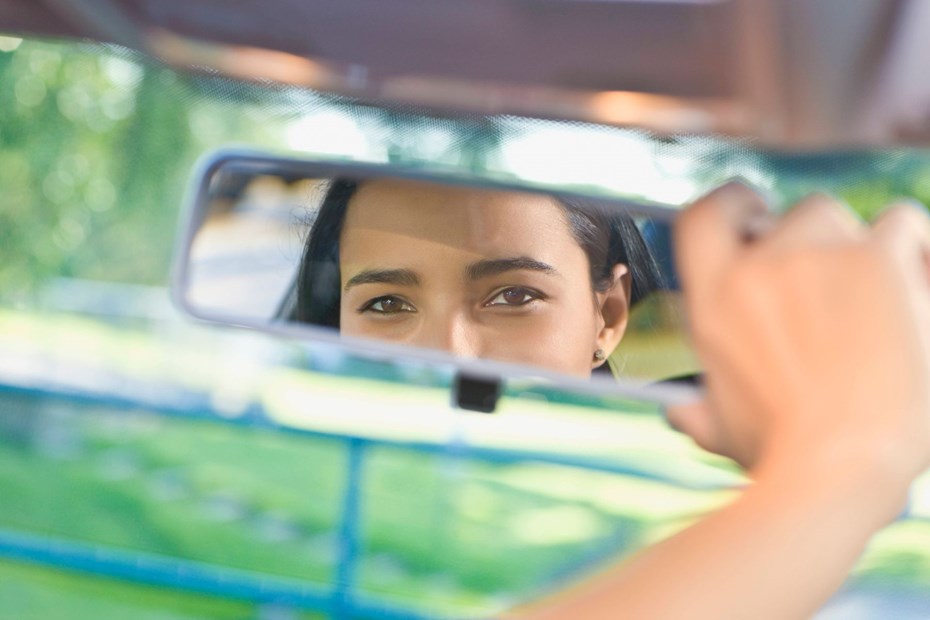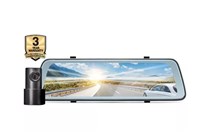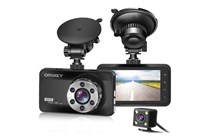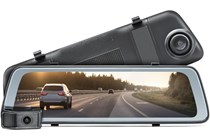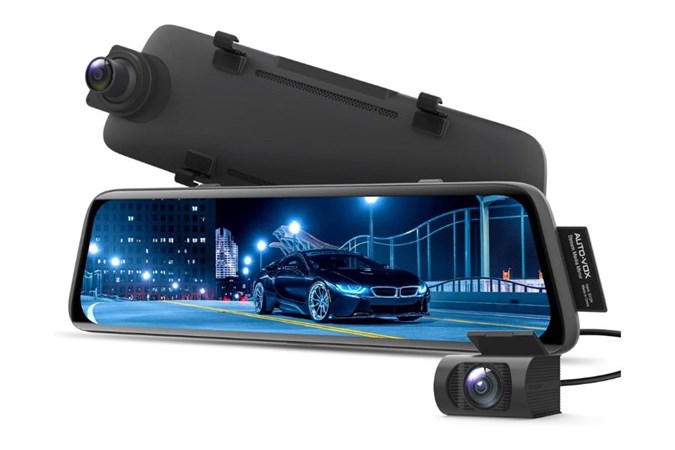A novel take on dash cams, mirror dashcams clip over an existing rear-view mirror and serve as a forward and rear-facing dashcam to cover both ends of your car. A really discreet way of covering yourself while driving, mirror dash cams also have the benefit of having a visible screen while you drive, doubling as an aftermarket reversing camera.
Rear-end collisions make up 27% of traffic incidents in the UK and account for roughly 400,000 annually, according to a study carried out by RTA Assistance Limited in 2020. A rear-end collision can cause nasty injuries like whiplash and potentially costly, especially if blame is disputed. This is why covering your car’s rear is so important.
The best mirror dash cams at a glance:
There are plenty of excellent front and rear options for sale, and they might be better suited to your needs, but if you are set on a mirror dash cam, we’ve rounded up the best currently available.
What is a mirror dashcam?
As the name suggests, mirror dashcams combine the capability of a dashcam and a rear-view mirror. They are conveniently placed to provide a clear view out of the rear of your vehicle while capturing vital footage. Mirror dashcams can be massively useful, and can even act as a reversing camera too.
Key features to consider when purchasing a mirror dash cam
Aside from the usual features to look for in a dashcam, like footage quality, GPS, Wi-Fi, and parking mode, there are a few extra things to think about when investing in a mirror dashcam.
Since the mirror dashcam sits where your mirror would be, size is important to consider — you wouldn’t want it to impede your visibility out of the windscreen. The larger screen of a mirror dashcam is, however, quite convenient to view and review footage.
Fitting instructions are also important, as there are several ways in which a mirror dashcam can be mounted: including removing the existing mirror, or simply clipping the screen onto the mirror. Some mirror dashcams require the rear-facing camera to be mounted to the exterior of the car, so do bear that in mind.
Lastly, while low-light performance is important for any dashcam, we’d put a greater importance on it for a mirror dashcam. This is because a mirror dashcam must also act as a rear-view mirror, and if the low-light performance isn’t great then you won’t be able to see much behind you.
Mirror dashcams can be hugely useful for vehicles with limited rear visibility, like vans.
The best mirror dash cams
Editor's choice
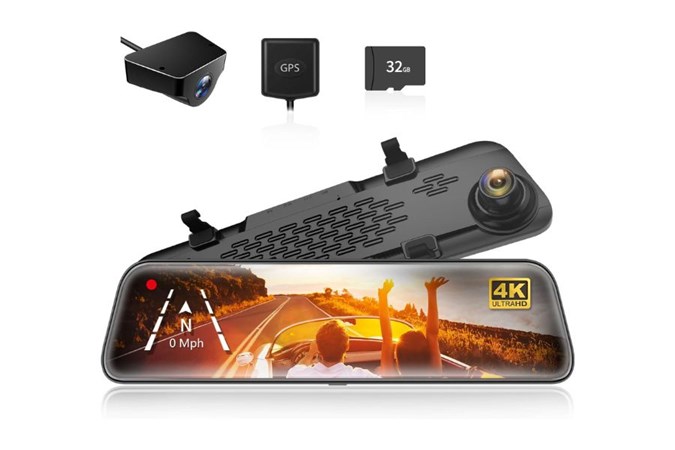

The upgraded lens reduces reflections during the daytime and captures higher-quality images at night. Time-lapse mode will keep an eye on your car whilst it's unattended, and the external GPS antenna will give you live location info.
Pros
- Great sized touchscreen
- Parking assistance is a useful feature
- 4K camera quality is great
Cons
- Footage will be slightly angled on an RHD car
- May be difficult to install
| Recording resolution: | 4K front 1080p rear |
| Recording type: | Loop recording |
| GPS Tracking: | Yes |
| G-Sensor: | Yes |
| Screen size: | 12" |
Best versatile dashcam
The dash cam supports three display modes: front, rear, and both front and rear simultaneously in a split screen. You can switch freely between them. Add in reverse assistance, GPS and park mode, and you have yourself a pretty comprehensive system.
Pros
- RHD configuration will ensure you get full video coverage
- Solid build quality
- Touchscreen
Cons
- Struggles at night with glare issues
- Rear camera quality could be better
| Recording resolution: | 1080p front 720p rear |
| Recording type: | 8GB-64GB Samsung or SanDisk SD Card |
| GPS tracking: | Yes |
| G-Sensor: | Yes |
| Screen size: | 9.35" |
Best budget mirror dash cam


Both cams have a resolution of 1080p, Sony sensors for improved night vision and wide-angle lenses. You don't get fancy stuff like GPs or park protection, but for the price, it's a neat piece of kit that does what it's meant to.
Pros
- Great value
- Good low light performance
- 170 degrees wide angle lens
Cons
- Won't replace your car's mirror
- Entry-level dashcam
| Recording resolution: | 1080p |
| Recording type: | Loop recording on SD card |
| GPS tracking: | No |
| G-Sensor: | Yes |
| Screen size: | 3" |
Best reliable mirror dashcam
There's even a winter mode that produces enough heat to keep the windscreen clear so the camera can always capture video. Image stabilisation can dial out bumpy footage and ensure you get the best video at all times, and don't worry about not being able to see the screen because it comes with anti-glare.
Pros
- Good HD video resolution
- Anti-glare
- Auto image stabilisation
Cons
- Other cameras offer better value for money
- Hardwiring kit required to get the best value
| Recording resolution: | 1440p at front and 1080p at the rear |
| Recording type: | Loop recording on SD card |
| GPS tracking: | No |
| G-Sensor: | Yes |
| Screen size: | 10.2" |
Best for voice control
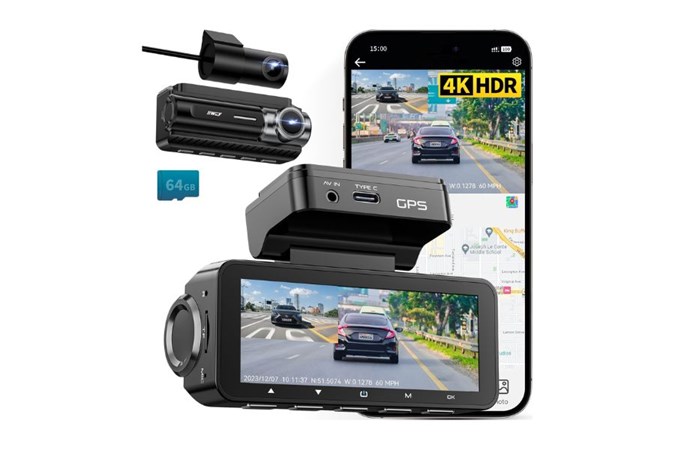

There's 5GHz WiFi & Built-in GPS Tracking alongside a 24-hour parking monitoring function which you can set to record in time-lapse mode or the collision detection mode. These functions would require a hardwiring kit.
Pros
- Built-in GPS
- Smart voice control
- Good night vision
Cons
- Smaller screen
- Hardwiring kit is required for some functions
| Recording resolution: | 4K (3840*2160p) at the front and 1080p at the back |
| Recording type: | Loop recording on SD card |
| G-sensor: | Yes |
| GPS tracking: | Yes |
| Screen size: | 3.39" |
Everything you need to know about mirror dash cams
-
Why choose a mirror dash cam?
Aside from the added bonus of capturing more evidence in the event of an accident, a mirror dash cam is a great option because they can help if you're not confident at parking. Most mirror dash cams double as reversing cameras, and some even have movable guides to make sure you can park properly.
-
What should I look for in a good dash cam?
Video quality: Also known as the video resolution, this indicates how many pixels there are in each frame of video. The more pixels there are in the video the sharper the footage is. So if you want to make sure your video achieves a good level of details then any camera that is 1080p (HD) or higher (2K/4K) should be perfectly acceptable.
Lens type: A wider lens (120+ degrees) will give you more coverage. Some budget dash cams will even manage a large 170 degrees field of view to fit more of the road into the video.
G-Sensor: When triggered by excessive g-force (like in a crash or emergency stop), it will ensure that that footage is saved and will not be written over.
Parking mode: This will start recording if your car is hit when parked up. A great dash cam feature to have if someone drives off after an accident. -
How is it powered?
Most dash cams will simply plug into your cigarette lighter; if your engine is on, your dash cam will receive power. This is great for recording while driving but rubbish if anything happens to your car when it's parked up. Your best bet is to look at buying a hardwire kit to ensure that your dash cam can run at all times. Just buy one that has special features to avoid draining the battery.
-
How to install a mirror dashcam?
Installing a mirror dashcam is relatively easy. For most mirror dashcams you simply have to clip it on to your existing mirror within the car and then connect it to your car's power source as you would for a normal dashcam. Some of the dashcams mentioned here aren't attached to mirror so they will work like traditional cameras that attach to the windscreen.
You can choose to connect your camera to the vehicle's 12V socket, but if you want to make use of all of the features for some of the more advance dashcams then you'll have to buy a hardwiring kit. There's plenty of hardwiring kits available but we suggest you find one that is compatible with your camera and vehicle.
Lastly, you should tuck away any loose wires to avoid them coming in the way while you're driving. This can be done by inserting them into your car's interior trim around the edges of the windscreen and down the A-pillar. Some dashcams come with a handy tool to make this task easier.
Sign up to the Parkers Newsletter to keep up to date with more of the latest reviews, news, and recommendations from the Parkers team.
Just so you know, we may receive a commission or other compensation from the links on this website - read why you should trust us.


